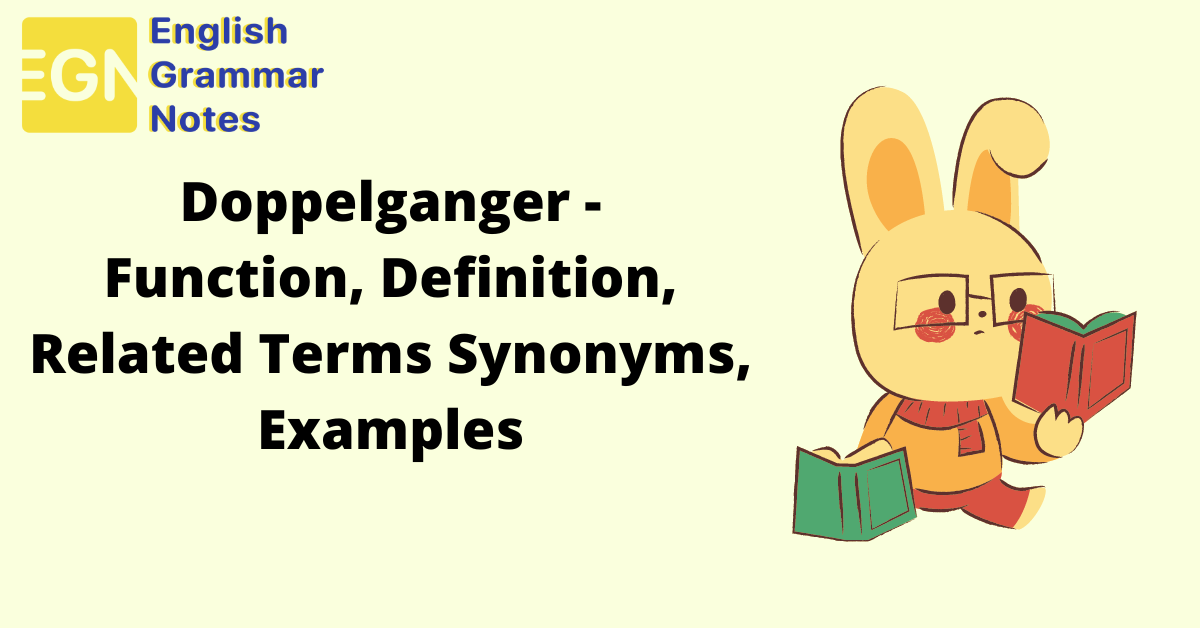Doppelganger, pronounced DOPP-el-gang-er, has its roots in a German word meaning “double-walker.” In traditional terms, the word was used to refer to a ghost or spirit, but in modern times it refers to something that is akin to something else. In this article, you will be introduced to all the essential information about a doppelganger, including its definition, examples, functions, related terms, etc.
- What is a Doppelganger?
- Doppelganger’s Function
- Literature Examples of Doppelgangers
- Doppelgangers Related Terms
- FAQs on Doppelganger
What is a Doppelganger?
As a literary device, Doppelganger is used to refer to a twin or double of some character, usually in the form of an evil twin. Originally, the term was used to refer to a ghost, or shadow of a person. Today, the term simply refers to someone who resembles another person.
Doppelganger’s Function
The functions of a Doppelganger include:
- A Doppelganger can be used to show the ‘other self’ of a character.
- This gives rise to the conflict within a story
- gives a creepy or eerie tone to a story.
- At times, a Doppelganger incites laughter.
Also Read,
Literature Examples of Doppelgangers
Given below are a few examples of doppelgangers from literature:
- In William Shakespeare’s play Hamlet, the doppelganger comes in the form of Hamlet’s father’s ghost. The revenge plot is triggered when the ghost asks hamlet to kill his father’s murderer.
- In Dr. Jekyll and Mr. Hyde, written by Robert Louis Stephenson, the concept of the doppelganger is used as a way to introduce the character’s evil counterpart.
- In Joseph Conrad’s The Secret Sharer, crew members of the ship serve as a mirror to the captain of the ship. This is an instance of a doppelganger.
Doppelgangers Related Terms
Given below are a few terms that have similar functions to a doppelganger. However, these terms are not interchangeable.
- Alter Ego: “Doppelganger” and “alter ego” are misinterpreted at times. A doppelganger refers to a twin, whereas an alter ego refers to an alternative self, embodied by a single person.
- Mind control: When a character is controlled by someone else, it does not come under the category of a Doppelganger.
- Imposter: When someone dresses the same way as another character does, it cannot be considered a doppelganger. On the other hand, such a person is known as an imposter.
Learn Grammar concepts easily by using our English Grammar Notes website. It will improve your communication skills easily.
FAQs on Doppelganger
Q1. What is a Doppelganger?
Ans: As a literary device, a Doppelganger can be considered as a twin or double of some character, usually in the form of an evil twin. The term simply refers to someone who is a look-alike of another person.
Q2. What are the functions of a doppelganger?
Ans: A doppelganger has several functions. It can be used to give rise to a conflict within a work. A doppelganger gives an eerie or mysterious tone to what you write and is often used to portray the “other self” of a character.
Q3. Distinguish between an imposter and a doppelganger.
Ans: A person who dresses the same way as another character is called an imposter. On the other hand, a Doppelganger refers to a twin or double of some character.
Conclusion
Doppelgangers can add completely new meaning and depth to the story you write. It makes the piece more appealing to the reader. Using a doppelganger also gives the writer a chance to develop a theme or a plot via the actions of the doppelganger. The use of a doppelganger will surely attract the attention of your readers.
